Canon Powershot G6By: Dave EtchellsThe next generation of Canon's popular "G" model updates the line with a larger, 7.1-megapixel CCD and a redesigned camera body. <<G6 Sample Images :(Previous) | (Next): Print-Friendly Review Version>> G6 Imatest ResultsReview First Posted: 09/28/2004 |
Detailed analysis of the Canon PowerShot G6 images, from Imatest(tm)
I've recently begun using Norman Koren's excellent "Imatest" analysis program for quantitative, thoroughly objective analysis of digicam test images. I highly commend it to our technically-oriented readers, as it's far and away the best, most comprehensive analysis program I've found to date. (And with an introductory price of only $59, it's hard to beat.)
My comments below are just brief observations of what I see in the Imatest results. A full discussion of all the data Imatest produces is really beyond the scope of this review: Visit the Imatest web site for a full discussion of what the program measures, how it performs its computations, and how to interpret its output.
Here's some of the results produced by Imatest for the Canon PowerShot G6:
Color Accuracy
The Canon PowerShot G6 has what I'm coming to recognize as characteristically "Canon" color. Namely, a slight saturation boost overall (in keeping with general practice for consumer digicams), with a bigger boost on reds, and a hue shift of cyan shades more toward the blue realm. In the chart above, oversaturation is shown by the extent to which the circles (camera color) are displaced outward (higher saturation) relative to the ideal values (squares). On average, color saturation of swatches on the MacBeth ColorChecker(tm) chart are 110.7% of their ideal values. (An average oversaturation of 10.7%.)
The modest oversaturation is pretty typical of consumer digicams, and not
a cause for concern. Possibly more problematic is the hue shift seen in cyan
colors, (the points numbered 6 and 18 in the chart above), which tends to
move shades of cyan more toward blue tones. Interestingly, I didn't see much
evidence of this in my shooting with the camera (or in other Canon cameras
I've shot with, and seen the same color shift in), I suspect the main effect
would be to produce richer blues in sky colors, something most consumers would
probably like.
Color Analysis
These images show the color behavior of the PowerShot G6 directly. In each color swatch, the outer perimeter shows the color as actually captured by the camera, the inner square shows the color after correcting for the luminance of the photographed chart (as determined by a 2nd-order curve fit to the values of the gray swatches), and the small rectangle inside the inner square shows what the color should actually be, based on perfect rendering to the sRGB color space.
Here, it seems that at least some of the oversaturation arises from the camera's
rather contrasty tone curve. It does show the effect of the hue shift in the
cyans and blues though, with the camera reproducing those colors as a little
"richer looking" than in real life.
Gray Patch Tone and Noise Analysis
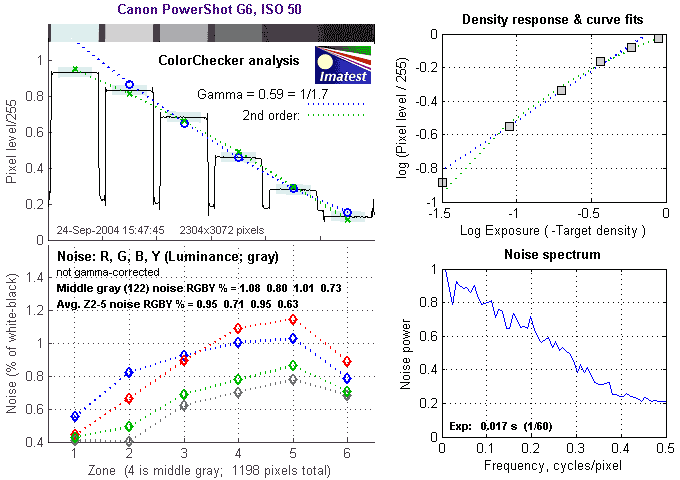
There's a lot in this particular graph, a lot more than I have room to go into
here. Bottom line, the PowerShot G6's noise levels are pretty low across the
board, but the noise spectrum is such that the noise is quite fine-grained.
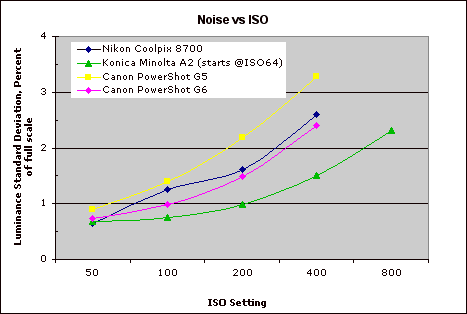
This chart compares the PowerShot G6's noise performance over a range of ISOs
against that of other cameras. At the time that I created this chart, we hadn't
yet seen any other cameras with 7-megapixel chips in them, so this comparison
is against a couple of other "high end" 8-megapixel units, as well
as against the earlier G5, to show the improvement Canon managed with the G6.
(This last is particularly impressive, given the smaller pixels in the G6's
sensor.) As you can see, the G6 falls somewhere between the Nikon 8700 and Konica
Minolta A2. What doesn't show in this graph is the very smooth, fine-grained
nature of the G6's noise pattern, which makes it much less evident to the eye
than the noise of many other cameras.
The chart above shows consolidated results from spatial frequency response
measurements in both the horizontal and vertical axes. The "MTF 50"
numbers tend to correlate best with visual perceptions of sharpness, so those
are what I focus on here. Imatest reported uncorrected resolution figures of
1552 line widths per picture height in the horizontal direction (corresponding
to the vertically-oriented edge), and 1334 along the vertical axis (corresponding
to the horizontally-oriented edge), for a combined average of 1443 LW/PH. Correcting
to a "standardized" sharpening with a one-pixel radius increased the
vertical number quite a bit, to 1493 LW/PH, giving a corrected average of 1523
LW/PH, an excellent result.
For the real techno-geeks, the two plots below show the actual edge response
of the G6, for horizontal and vertical edges:
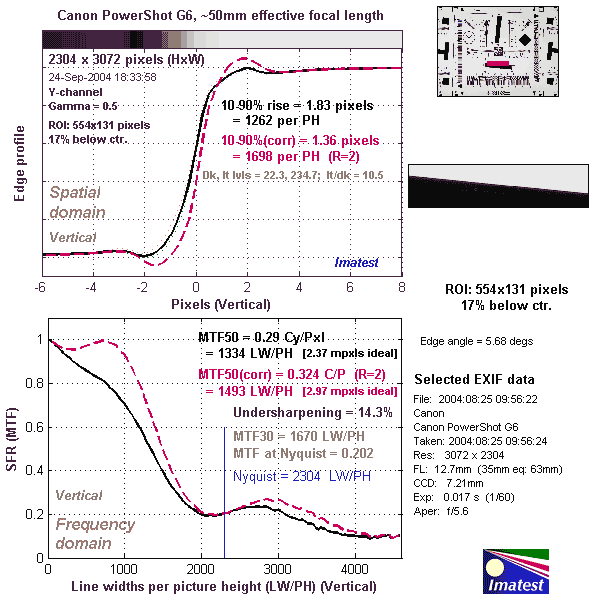
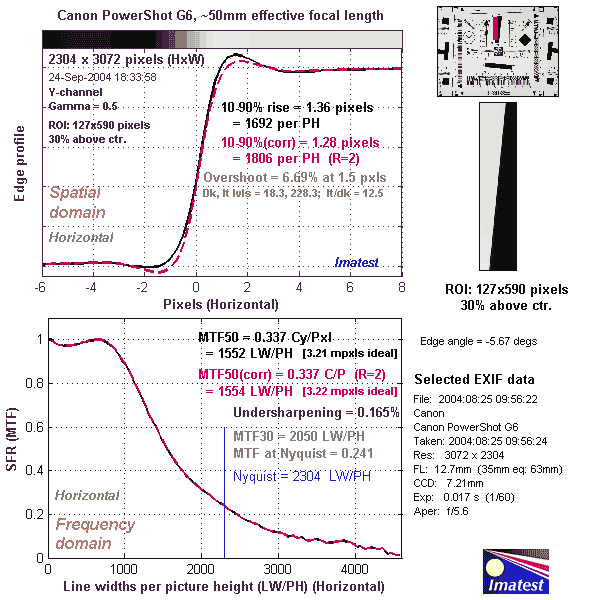
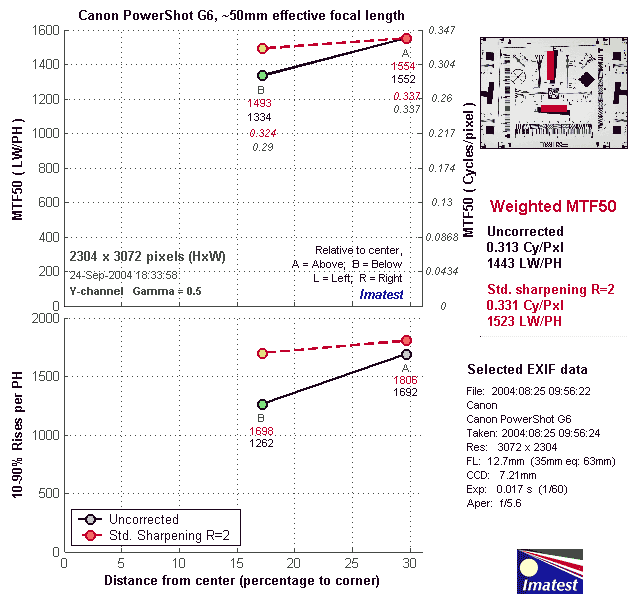

Follow Imaging Resource: